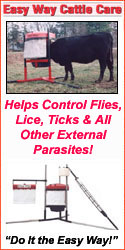 |
 |

|
|
|
Kentucky Ag News Headlines |
 |
Grass Sawflies in Hay
By: Ric Bessin, Kentucky Extension - 05/20/2022
After the fall armyworm outbreak we experienced last fall in soybeans, alfalfa, pastures, and other crops, producers are wary of insects building up in their pastures and hay fields. Last week, we had a report from a producer in south central Kentucky of large numbers of 'worms' collecting on the tarp over his equipment while cutting his fescue/orchardgrass field. The concern was the number being collected on the equipment and the potential damage to the hay field.
The initial question to answer is: what are these insects? While they look like caterpillars, they are not.
Caterpillars belong to the order Lepidoptera (moths and butterflies) while sawflies are in the order Hymenoptera (wasps, ants, and bees). This is a key distinction as many of the controls for caterpillars are completely ineffective against sawflies. You can tell the difference between a caterpillar and sawfly larvae by counting the number of prolegs. Caterpillars will have five or fewer pairs of fleshy pro-legs while sawfly larvae will have seven or eight pairs of pro-legs. The grass sawfly is light greenish-yellow in color with a light band on each side of the body and greenish-yellow head. Older larvae will have a dark bar across the head.
Grass sawfly wasps emerge in early April and lay eggs on various grasses, including hay fields and small grain crops. Larval development takes 21 to 30 days after which the larvae burrow into the soil and enter diapause for the summer in the pre-pupal stage. They feed on leaves, and in small grains, they feed on developing stems; when populations are high, they can cause serious head clipping.
Sampling for Sawfly
In terms of sampling for grass sawflies, they blend in with grasses and can be difficult to see. They are sampled with a sweep net or by carefully examining plants on a per square foot basis. In hay and pastures, there is no established threshold, so I recommend treatments should be considered only if the numbers are comparable to the threshold for fall armyworm, which causes the same type of damage. The action threshold for fall armyworm in pastures is 2 or more per square foot.
According to the University of Maryland, you can scout for sawfly larvae and armyworms in small grains by shaking stems. Shake both sides of 5 linear feet of row and examine any worms that fall off between the 2 rows; also note any head clipping. Repeat for at least 10 sites. The threshold for sawfly larva and armyworm is when the larvae number more than 0.4 per linear foot of row or 0.7 per square foot and are smaller than ¾ inch. If the larvae are over 1 inch, have a dark bar on the head capsule, and have clipped many heads, it is probably too late to treat.
Management
In terms of sprays for sawflies, products vary somewhat based on the crops listed on the various labels. Generally the pyrethroids (MOA group 3A) and spinosyns (MOA Group 5) are effective against sawflies.
|
 |


|
 |
|
Copyright © 2024 - Farms.com. All Rights Reserved. |
 |
|